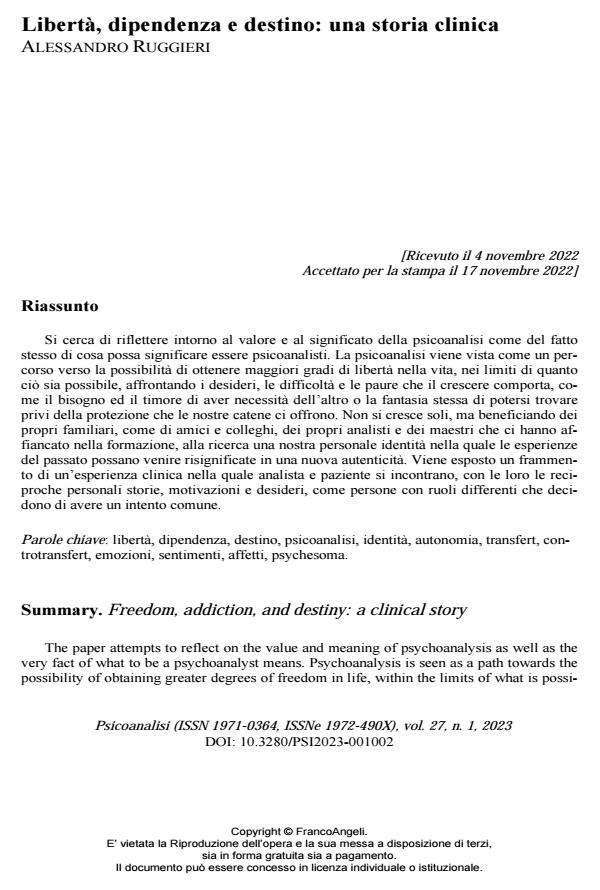Freedom, addiction, and destiny: a clinical story
Journal title PSICOANALISI
Author/s Alessandro Ruggieri
Publishing Year 2023 Issue 2023/1
Language Italian Pages 18 P. 19-36 File size 187 KB
DOI 10.3280/PSI2023-001002
DOI is like a bar code for intellectual property: to have more infomation
click here
Below, you can see the article first page
If you want to buy this article in PDF format, you can do it, following the instructions to buy download credits

FrancoAngeli is member of Publishers International Linking Association, Inc (PILA), a not-for-profit association which run the CrossRef service enabling links to and from online scholarly content.
The paper attempts to reflect on the value and meaning of psychoanalysis as well as the very fact of what to be a psychoanalyst means. Psychoanalysis is seen as a path towards the possibility of obtaining greater degrees of freedom in life, within the limits of what is possible, by facing the desires, difficulties and fears that growing up entails, such as the need and the fear of needing other, or the very fantasy of being able to find ourselves deprived of the pro-tection that our chains offer us. We don’t grow up alone, but benefiting from our family, as well as from friends and colleagues, from our own analysts and masters who have supported us in our training, searching for our own personal identity in which past experiences can be given new meaning in a new authenticity. A fragment of a clinical experience is presented in which analyst and patient meet, with their mutual personal histories, motivations, and desires, as people with different roles who decide to have a common intention.
Keywords: freedom, dependence, destiny, psychoanalysis, identity, autonomy, transference, countertransference, emotions, feelings, affects, psychesoma.
Alessandro Ruggieri, Libertà, dipendenza e destino: una storia clinica in "PSICOANALISI" 1/2023, pp 19-36, DOI: 10.3280/PSI2023-001002